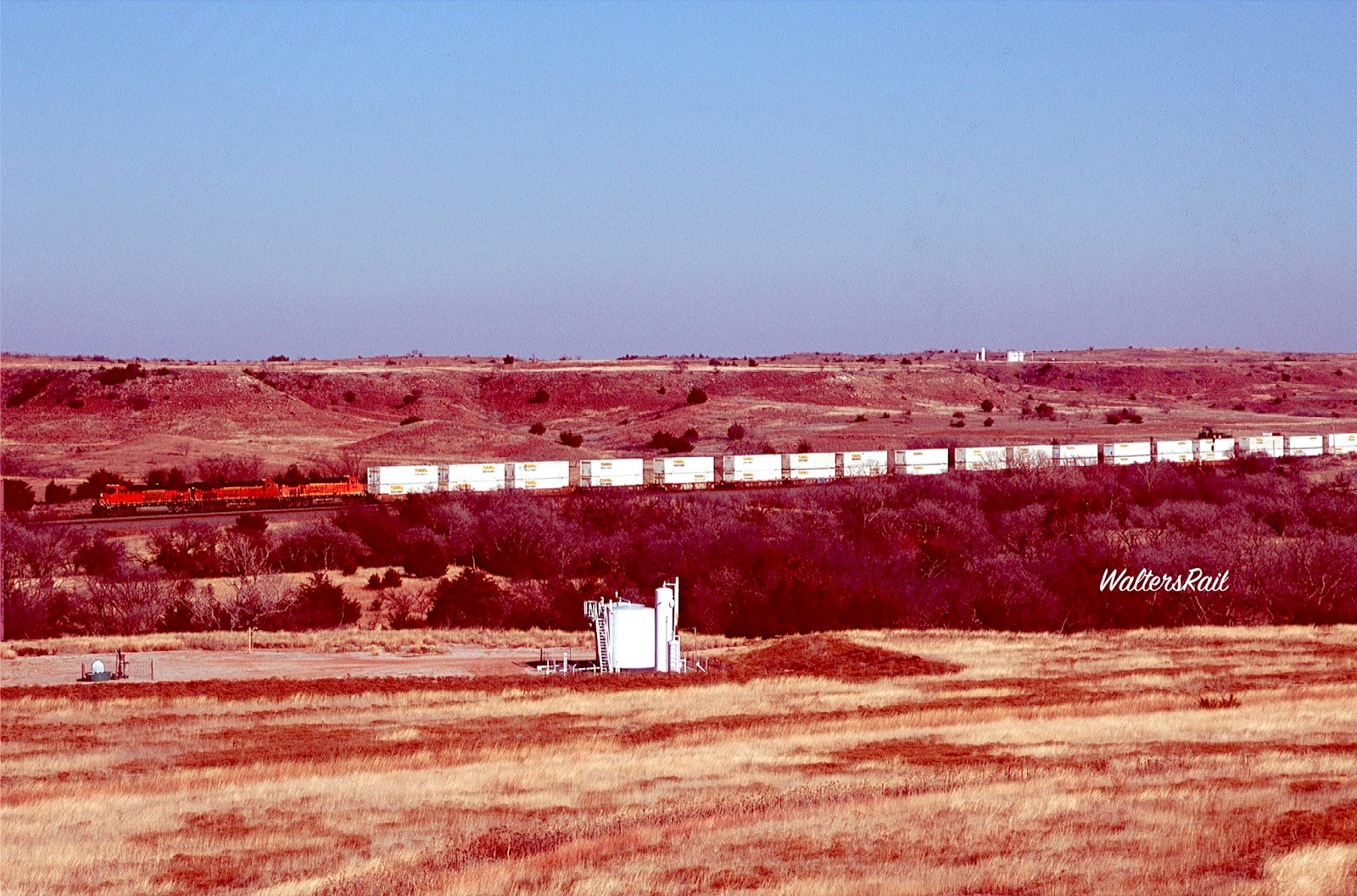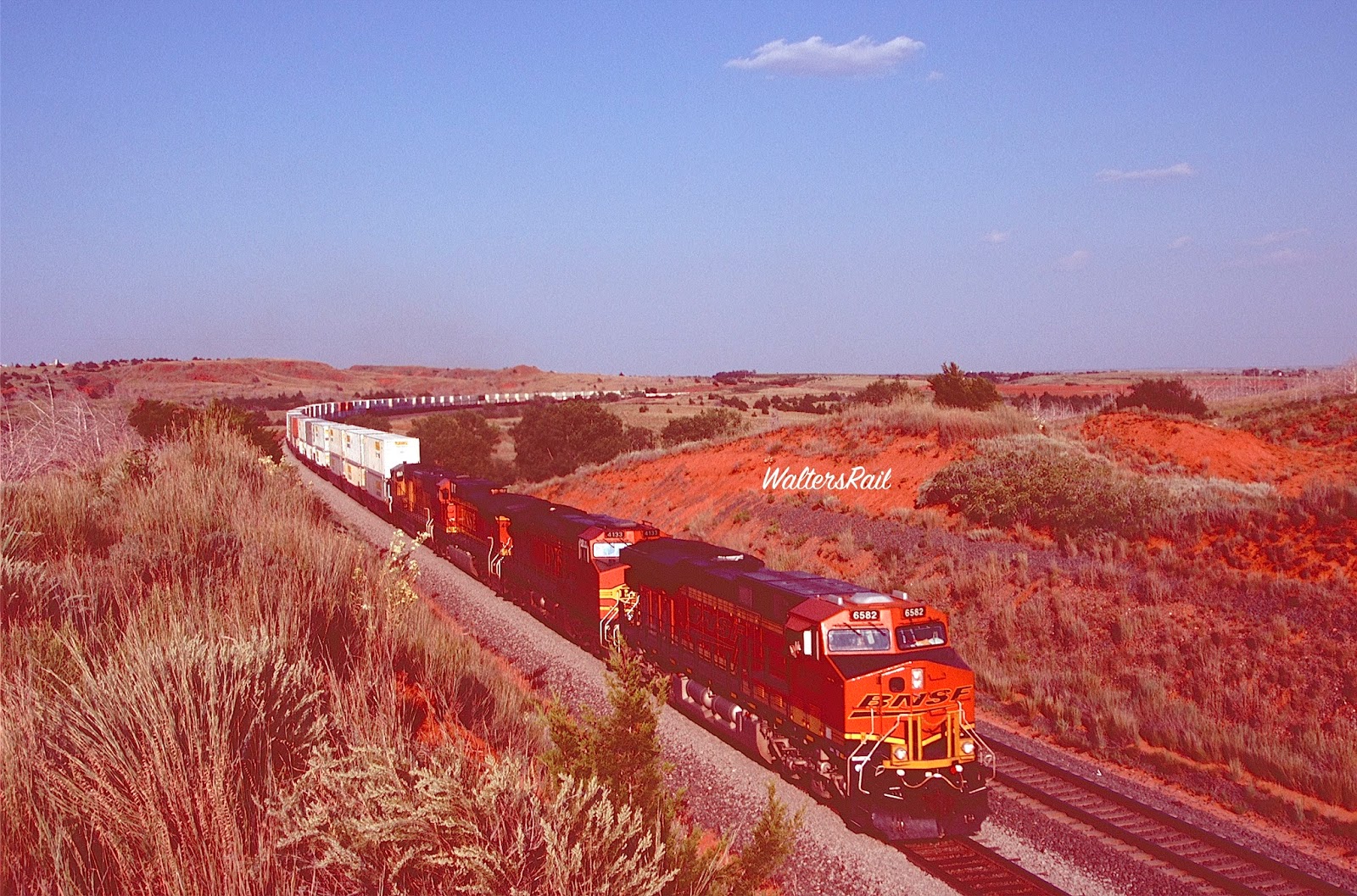Another Q Train in the Cimarron River Valley
If you are heading to Curtis Hill, take water and a cell phone, because there is no store or public telephone on the hill. The small convenience store at Quinlan has been closed about five years, and it does not look like anyone plans to reopen it.
The wind almost always blows in northwestern Oklahoma, layering everything, including cameras, with red dust, so keep your equipment protected. During warm months (April through October), rattlesnakes are active and numerous -- so numerous that Waynoka holds an annual Rattlesnake Hunt each year.
During the double-track project, workers inadvertently unearthed a den of over one hundred rattlers near Curtis. Construction stopped until the snakes were removed, not so much out of ecological concerns but rather from fear -- which I understand. I have almost stepped on rattlesnakes several times, which is why I now take my dog Bear (aka Mighty Dog) whenever I railfan in the West. He can smell snakes hundreds of yards away and always gives advance warning.
You should also watch out for chiggers -- nasty insects that you cannot see but will bite you all over your body and leave you itching for weeks. If you are unfamiliar with chiggers, you will only forget the insect spray once.
| 









































very good Paul. At last, I get to see what Curtis Hill can provide and a narrative that explains the action.
ReplyDelete